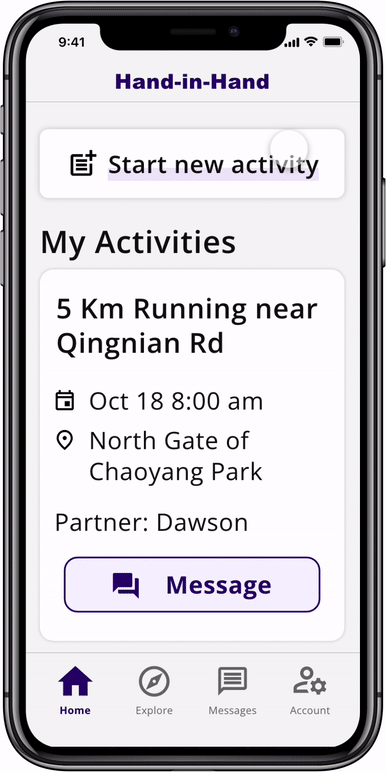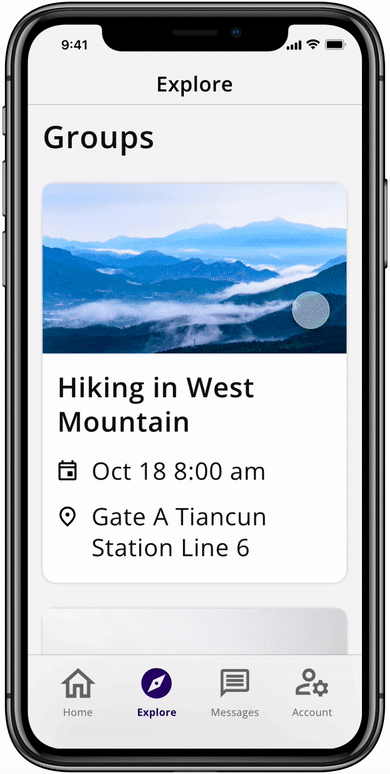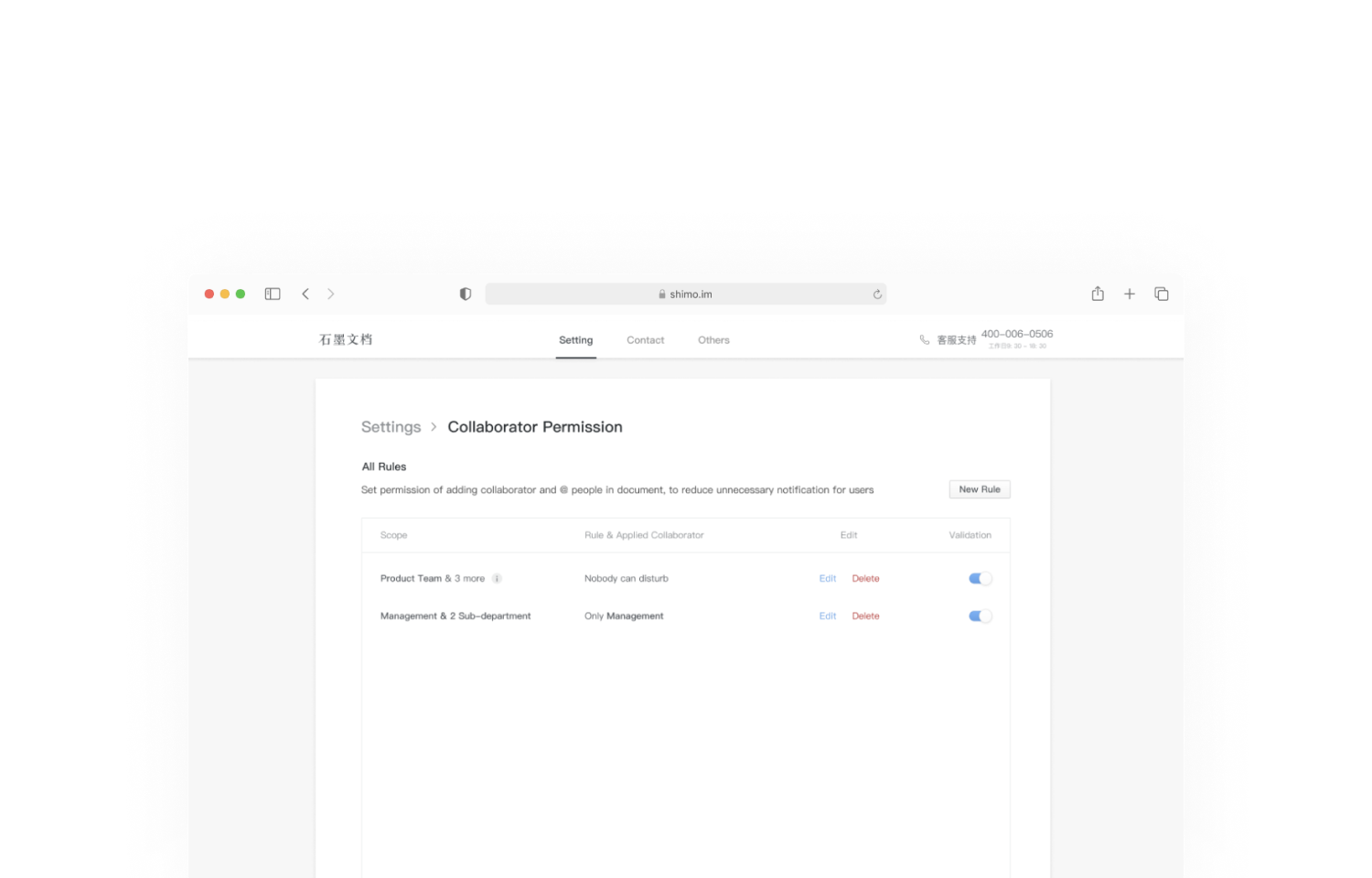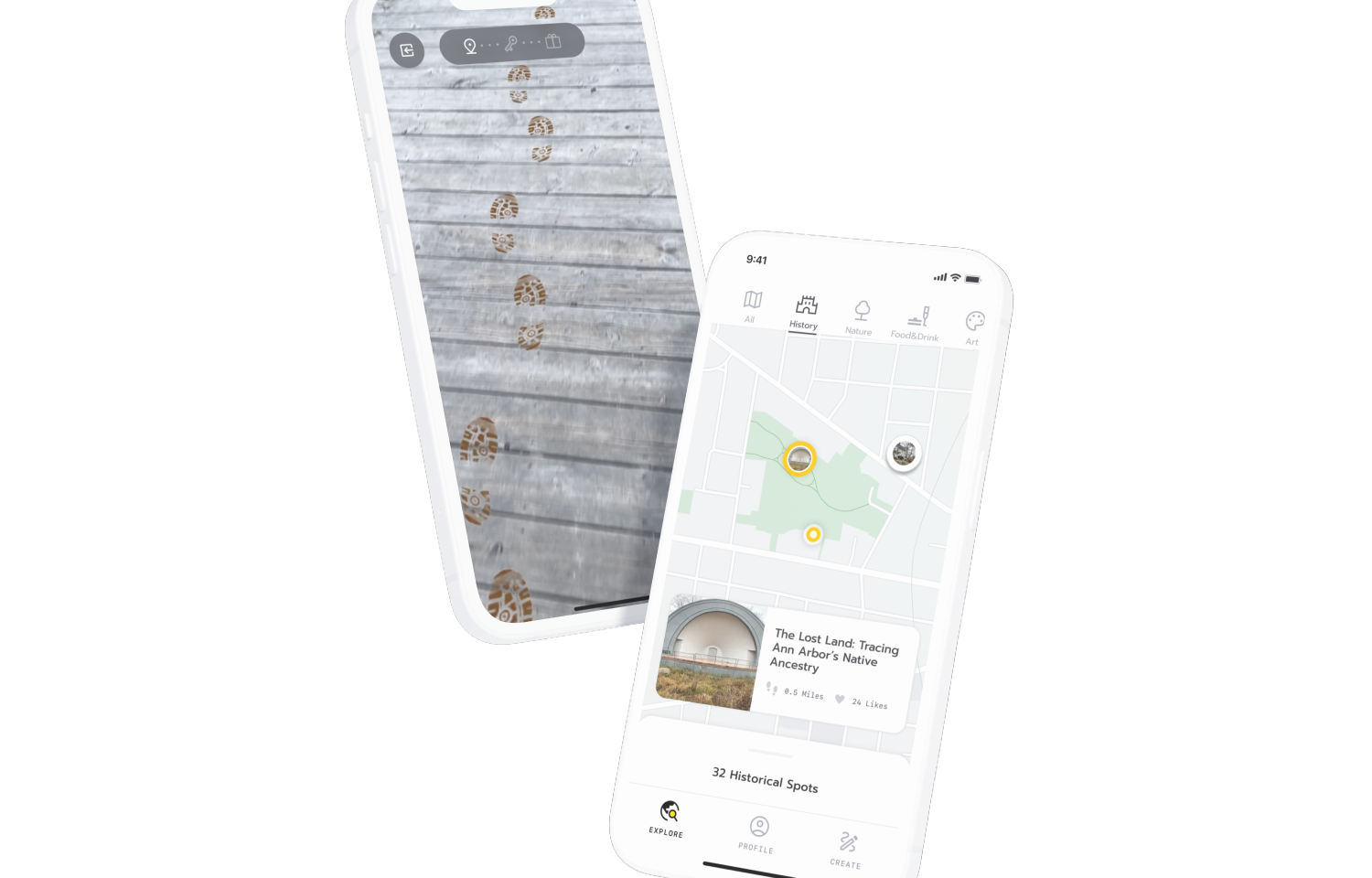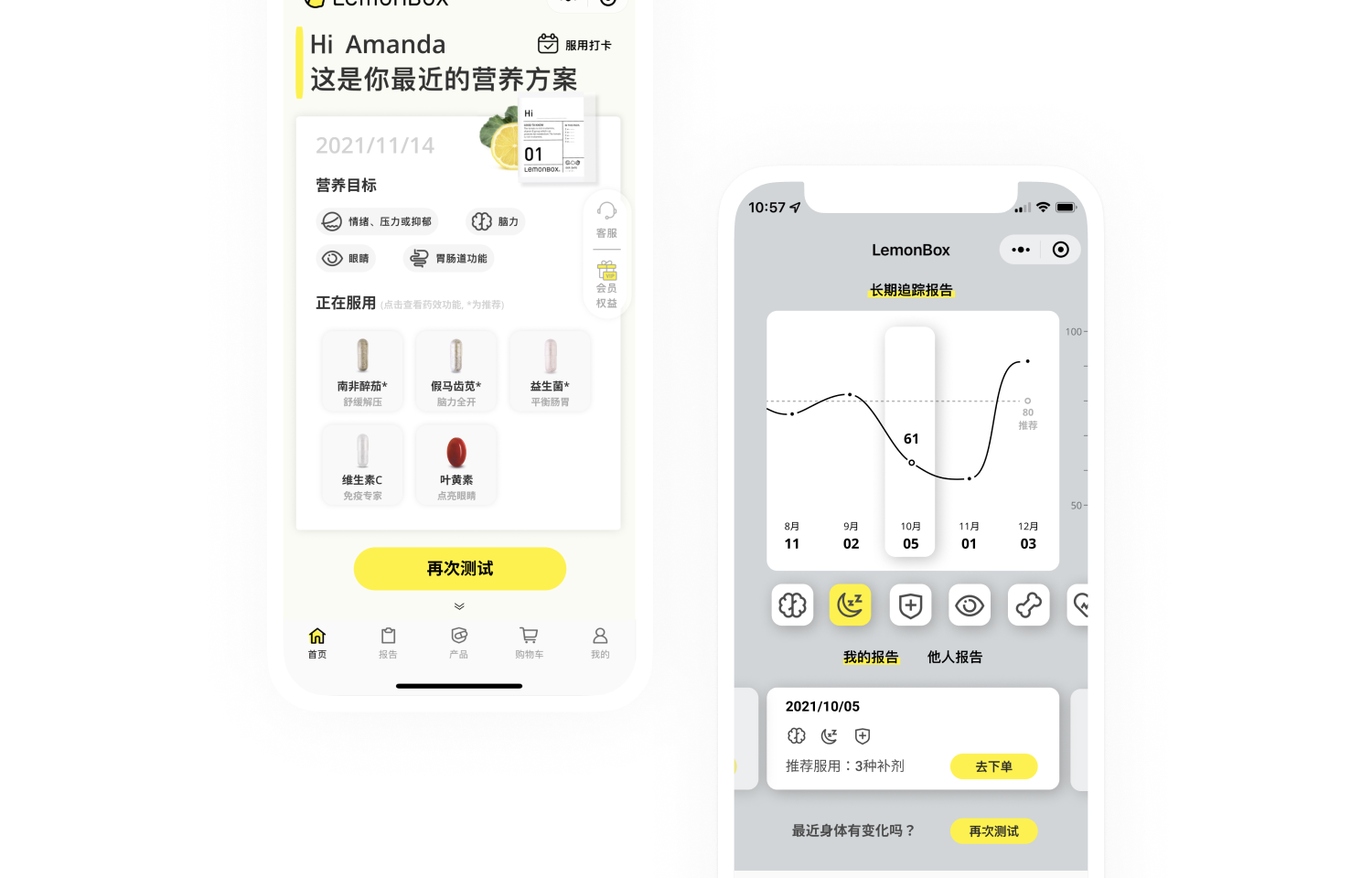overview
Problem
The visually impaired have limited chances of meeting friends with the same interests due to their lack of vision. However, such opportunities are offered only by a few non-profit organizations and schools as they rely on 1-on-1 hands-on accompany for many real-world experiences and skills.

Solution
Hand-in-hand: A new social app that connects the visual impaired with volunteers based on common interests.
Find people nearby sharing the same interest
By exploring nearby posts based on recommendations, volunteers and the visually impaired can find intended activities posted by others. Then they can communicate the exact location and time to meet. After the invitation is accepted, they can check the activity details on the home page.
Start own activities by posting on the community
Suppose users can not find a satisfying post. In that case, the visually impaired and volunteers can post on the community to describe their interests and wait for other people to participate.
Join group activities
If users want to join a group activity, they can find group activities on the explore page with the exact time and location. When users are sent an invitation to establish one with their partner, they will be asked whether they want to hold a group activity. If they do, the detailed information will be sent to the community to invite more people to join!
Process

Research & Ideate
Information Research
There is an unmet need for social activities for the visually impaired
- 65% of the visually impaired want to meet with new friends through Internet, but only 12% of them are fulfilled, according to a survey of the visually impaired people released by Tencent in 2019.
- The employment rate of the visually impaired in China is less than 30%, and 80% of the visually impaired individuals choose massage as their occupation, which usually requires seven days of full-time work and further leads to their separation from society.
User Research
I interviewed five visually impaired people of different ages and occupations about their life and social activities. Then, I participated in volunteer jobs in Beijing to assist visually impaired people in the running to understand their needs and pain point further.
Insight 01. The visually impaired meet new friends mainly by participating in activities organized by non-profit organizations or schools
- During the interviews, many visually impaired people mentioned their involvement in specific organizations or activities, based on interest, work, etc., when referring to their social experiences.
Insight 02. The visually impaired need 1-on-1 accompany for real-world activities
- When visually impaired people described their personal hobbies or experiences of learning skills, most talked about being accompanied one-on-one by others.
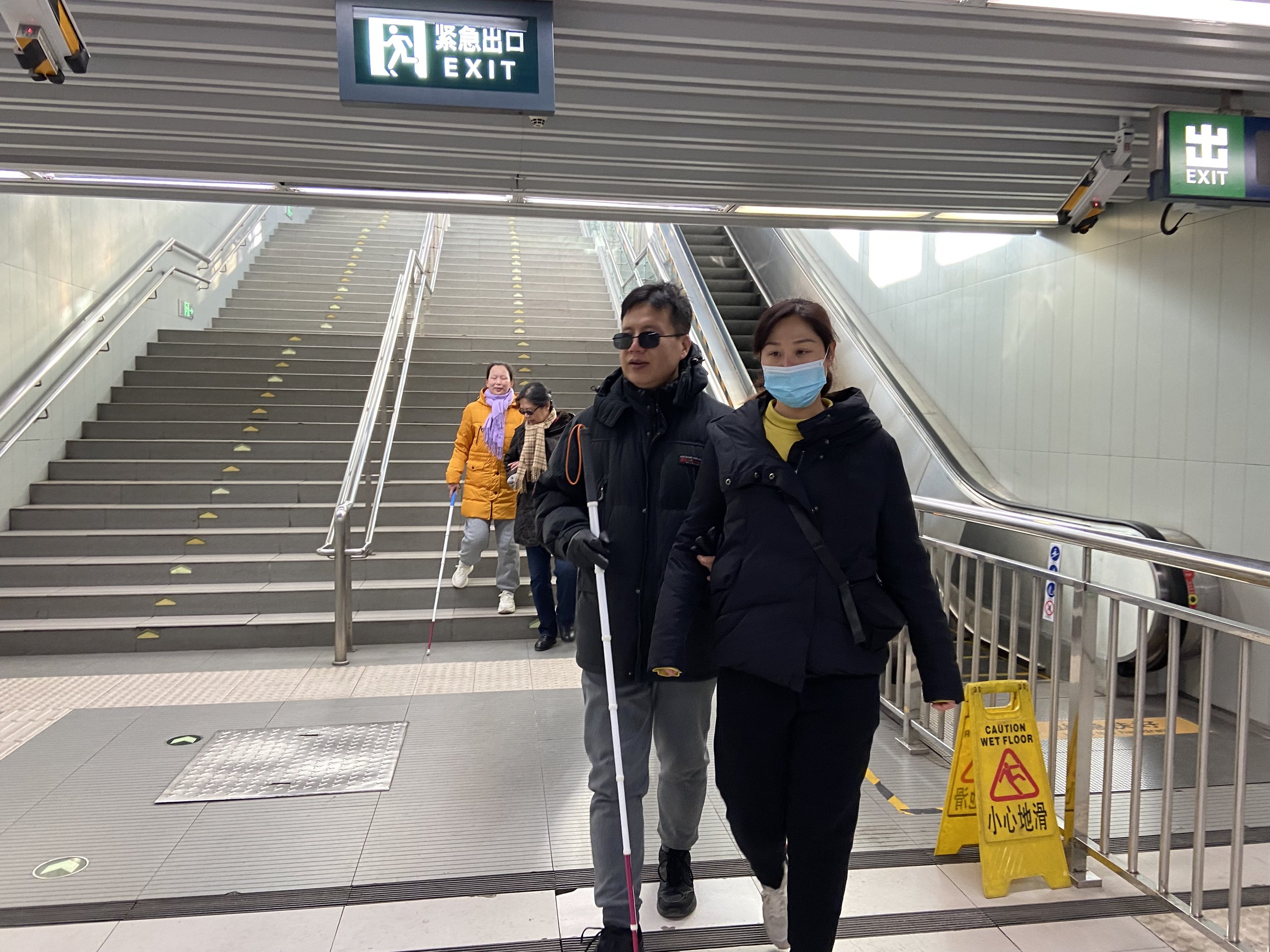
Insight 03. The visually impaired have limited chances of meeting friends with the same interests in daily life due to the lack of vision
- Because of the limitations mentioned, it is difficult for the visually impaired to meet new friends or explore new hobbies. There are only 3 non-profit organizations in Beijing that organize activities to watch movies or run at a fixed time, which was too little and inconvenient for them.

How might we help the visually impaired build social connection based on interest?
Concept: A mobile application that connects the visual-impaired and volunteers based on interests

Idea Test
Method
I did 1-on-1 talk with users (2 visually impaired users and 2 experienced volunteers) to learn their opinions about the whole product and used card sorting to learn their priority ranks for each feature.
High-Level Result
The design was in the right direction. But more features could be added to make the product more robust.
- The main features could satisfy users’ need: The visually impaired said they are excited about the opportunities to do something they have never tried before. And the volunteers said they believe the product could do a lot to help the visually impaired and want to be part of it.
- The biggest concern is TRUST & SAFETY: All users would rank SAFETY-related features as the 2nd priority after the main feature, especially for those the young and female. Also, they express their concern about establishing trust between two strangers.
- 1st-time volunteers for the visually impaired may feel confused: In activities held by non-profits, there will be specific training for the volunteers. But if it was in an APP, non-experienced volunteers may not know what to do when they participate for the first time.

Iteration
Journey Map
To make the whole structure and users flow clearer, I used a journey map to find out the main flow and features that need to be added.

Lo-fi Prototype
I built lo-fi interactive prototypes with what I learned from previous research and test. Let's see some key features at this stage to solve the biggest challenges users are concerned about.

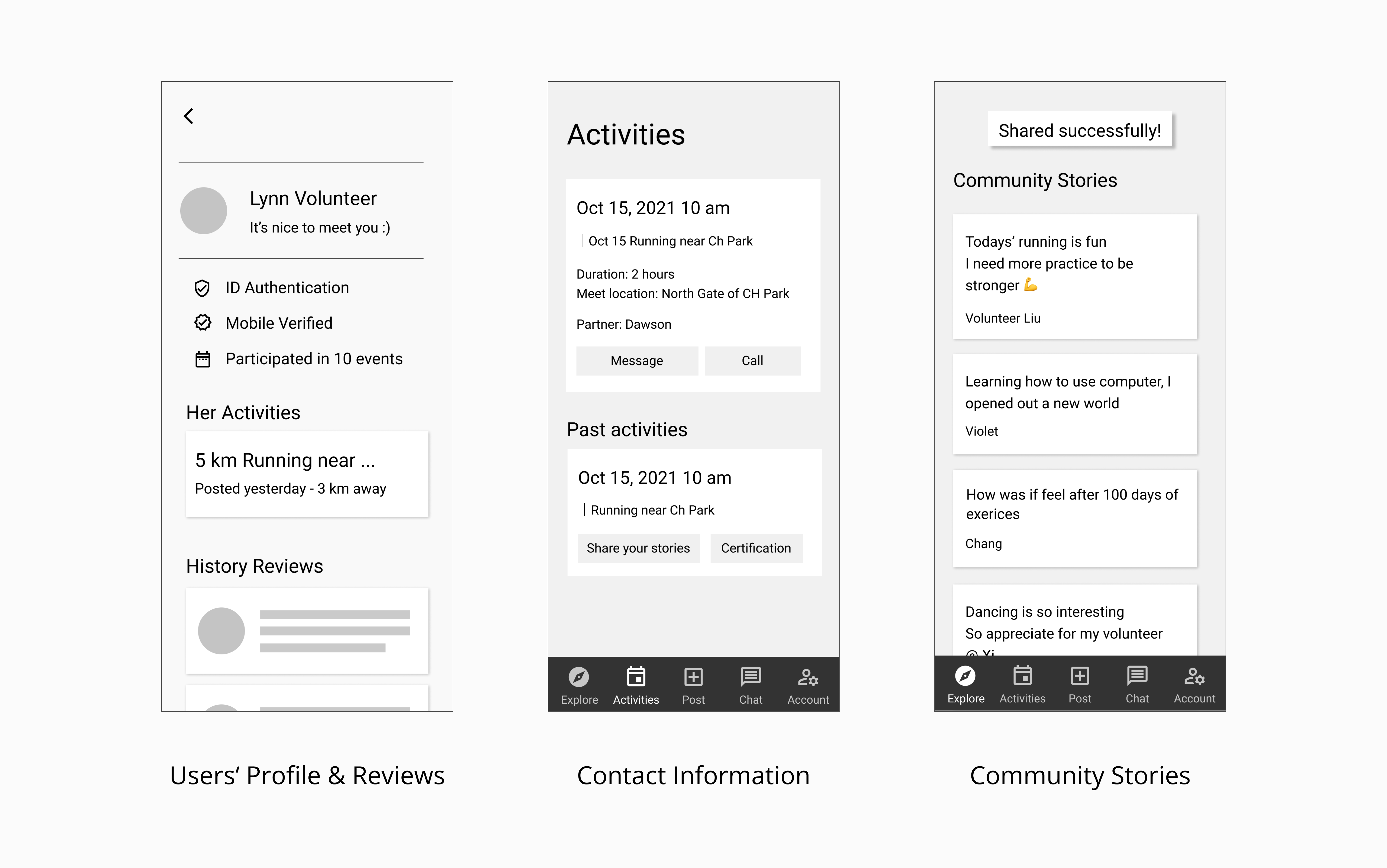
Usability Test
Method
I found four users (one blind, one half-blind, and two volunteers) to finish particular core tests as activity initiators and participants. Especially for the visually impaired users, as no prototype software could support VoiceOver, I imitated the VoiceOver to read the content and instruction on screen while users manipulated the phone.
High-Level Result
- Users could basically finished the set tasks as initiators and participates: I set 4 tasks for the activity initiator and 3 for the participant. Users could finish them as expected.
- The input flow was too complicated for the visually impaired to complete: It's hard for them to use the traditional form to fill in intended information since they use voice input to dictate.
- The information structure and UX writing was not clear enough, especially for the visually impaired, to follow: The users felt confused on many pages, even though they could understand it after a second thought.

Research Synthesis
The blind, the half-blind, and volunteers have different ways to access information
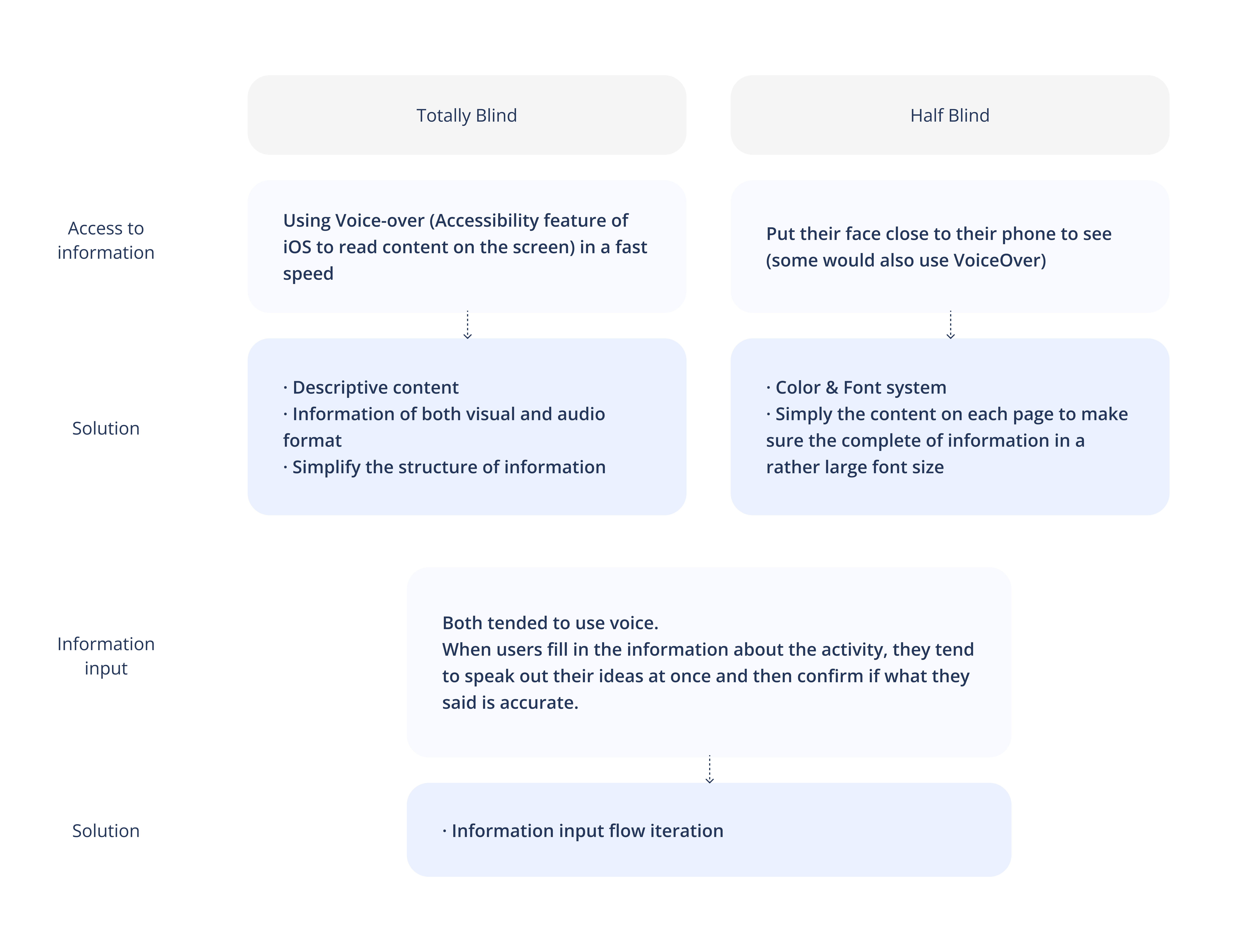
Iterations
Provide a simpler and more accessible experience for all kinds of users
Latest Design
Hand-in-Hand: A new social app that connects the visual impaired with volunteers based on common interests.
Find people nearby sharing the same interest
By exploring nearby posts based on recommendations, volunteers and the visually impaired can find intended activities posted by others. Then they can communicate the exact location and time to meet. After the invitation is accepted, they can check the activity details on the home page.
Start own activities by posting on the community
Suppose users can not find a satisfying post. In that case, the visually impaired and volunteers can post on the community to describe their interests and wait for other people to participate.
Join group activities
If users want to join a group activity, they can find group activities on the explore page with the exact time and location. When users are sent an invitation to establish one with their partner, they will be asked whether they want to hold a group activity. If they do, the detailed information will be sent to the community to invite more people to join!
What I Learnt
Insight-driven iteration
- The biggest challenge in the project is that I am unfamiliar with visually impaired groups. At the beginning of the project, I could only gain information about them through second-hand information.
- To solve the challenge, I tried all methods to connect with the groups in person - message shops, WeChat groups, volunteer groups, and Dark Experience Hall. After building connections, I did user research in each phase of my design process. Also, I constantly did volunteer work and chatted with them to further understand visually impaired people’s needs.
- These efforts made me feel more confident in each design decision, as they are driven by my insights from the research. However, it also made me realize my lack of user research techniques, which I would like to dive into in graduate studies.
Design with the visually impaired
Design for all
- I started my usability test with the visually impaired. Based on their feedback, I simplified my design, made the hierarchy clearer, and made some voice-based key features. When I took the revised plan back to volunteers to test, they said it was straightforward to use.
- Some experienced volunteers told me that the application could also be used for some people with cognitive impairments or other physical disabilities. I started my design with the wish to solve the challenge faced by the visually impaired, but in the end, I found it could do more than I intended.



